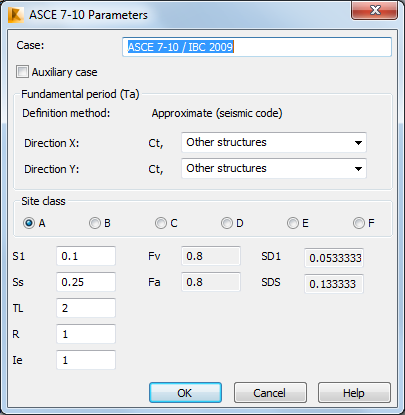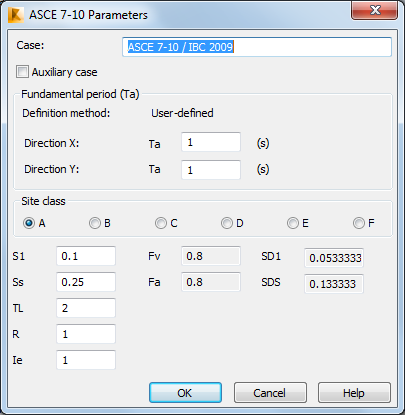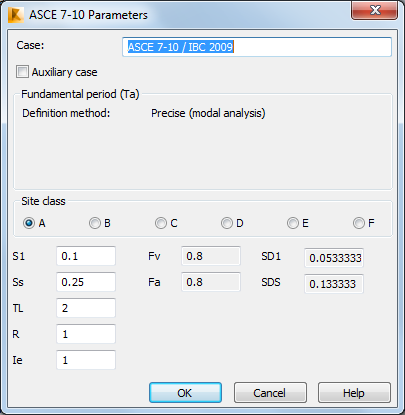Parameters of the seismic simplified analysis according to the equivalent lateral force method depend on a seismic code and a method of defining values of the fundamental periods selected in the Seismic Analysis dialog.
Approximate method

The fundamental period Ta is calculated according to the equation 4.6:
Ta = Ct * hn x
where:
Ct - building period coefficient depending on the type of seismic-force-resisting system that is used (given by the code)
x = building period formula exponent (given by the code)
h - structure height (m), defined by difference between Structure range and Reference level
User defined

Only Ta on both directions is to be defined.
Precise method

According to this method you can calculate the exact value for both X and Y directions. If the option Periods with maximal mass participation is off in the Seismic Analysis dialog, the first mode in direction where more masses is active. If this option is on, one of modes, which fulfill limitations and most masses is active in the direction. The maximal period is calculated according to the formula:
Tmax = Cu * Ta,
where:
Cu - Upper Limit Coefficient (Table 12.8-1),
Ta - Approximative Period
Code parameters
To complete the seismic analysis according to the rules given in this code, define the following parameters:
- Site class (A, B, C, D, E or F) based on the site soil properties, classified according to Chapter 20 of ASCE 7.
- Spectral response accelerations, as specified in Section 1613.3.1, shown in Figures 1613.3.1(1) through 1613.3.1(6):
- S1 - Acceleration parameter for 1-second period,
- Ss - Acceleration parameter for short periods.
- TL - long-period transition period, specified according to the ASCE 7-05 code, as shown in the Figures 22-15 through 22-20
- Ie - importance factor, as specified in ASCE 7-05, Section 11.5.1.
- R - response modification coefficient, as specified in ASCE 7-05, Tables 12.2-1
Base shear
Base shear force is calculated according to the formula:
Fx = V * wx * hk x / (Σ wi * hi) (eq. 12.8-11 and 12.8-12)
where:
wx and wi - floor weight
h - height from base level to appropriate floor level
V - base shear force (this value is already calculated in Robot)
| Period | k |
|---|---|
|
< 0,5 sec |
1 |
|
0,5 - 2,5 sec |
Linear interpolation |
|
> 2,5 sec |
2 |